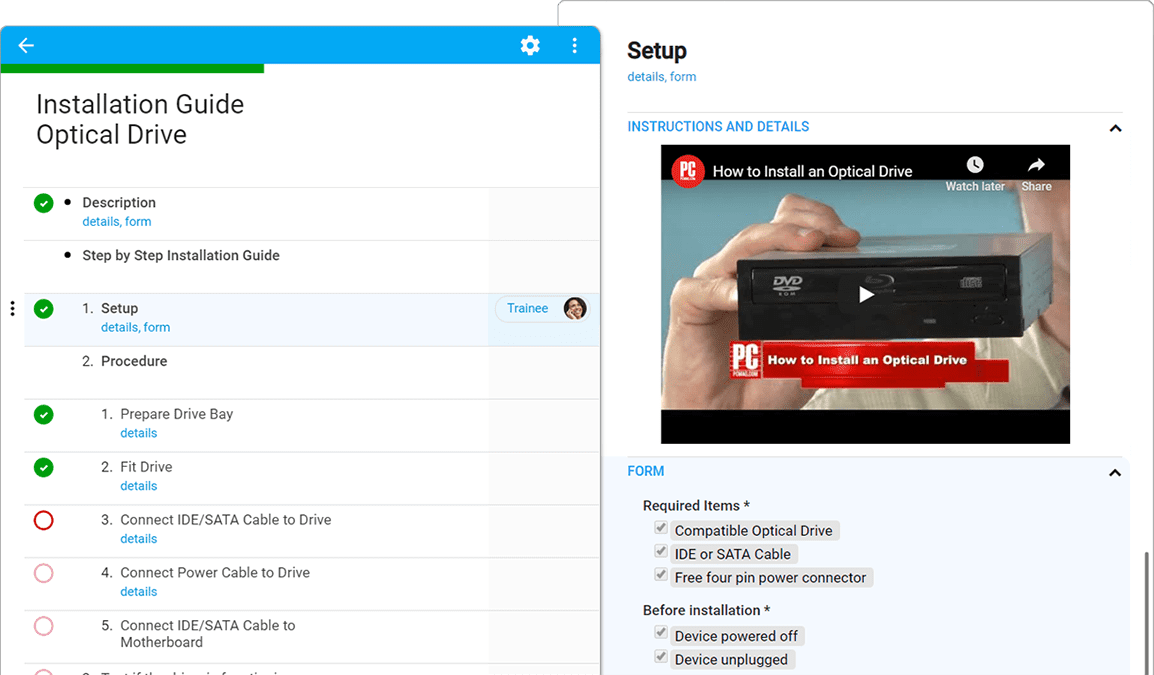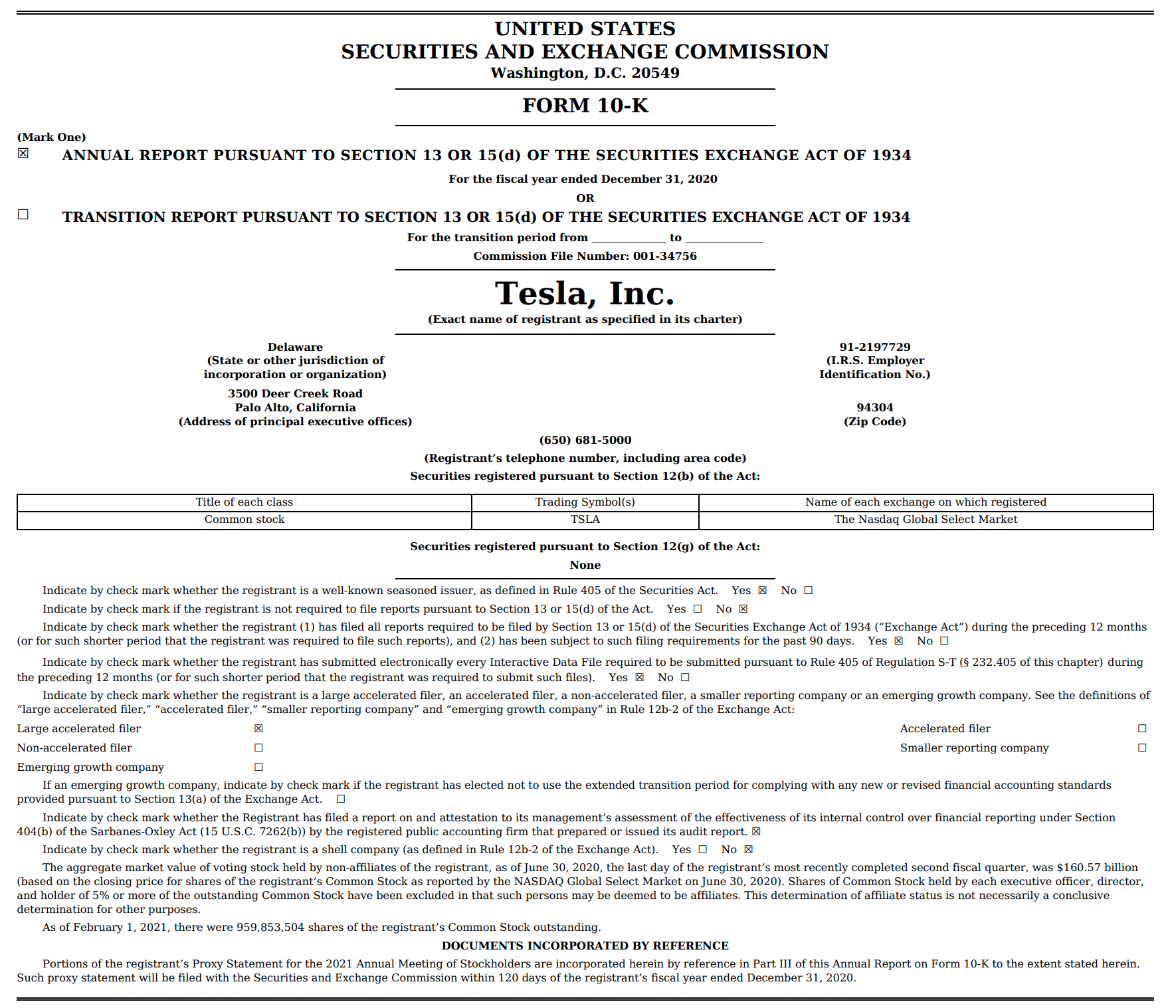
11 Technical Writing Examples & Samples in 2024
- Published:
- Updated: January 23, 2024

For any organization, there is a need for technical writers to provide easy-to-understand technical documentation to help explain complex processes for its products end-users, customers, and internal workforce.
Many organizations are a renewed focus on developing the technical writing skills of their writers and product managers. According to the U.S. Department of Labour Statistics, employment for technical content writing is expected to grow at a 12% faster rate between 2020-2030 in comparison to the overall average of other writing occupations.
With different industries having various technical writing needs (ie. in format types, tone, complexity, etc.), analyzing industry-leading technical writing examples from other companies can provide a roadmap and inspiration for new technical writers.
What Are Common Examples of Technical Writing?
- User Manuals
- Software Installation Guides
- Standard Operating Procedures (SOP)
- API Documentation
- Service Level Agreements (SLA)
- Press Release
- Case Studies & White Papers
- Company Documents
- Requests for Proposals
- Annual Reports
- Business Plans
What Is Technical Writing?
Technical writing is a niche, user-centric form of writing used to disseminate information on technical or specialized topics, such as software applications, environmental regulations, or medical procedures. This writing style simplifies complex information and processes, allowing readers to use that information for an intended purpose – such as using technology, executing a project, onboarding a user, exemplifying a complex process, or informing a large audience.
Types of Technical Writing
Technical writing majorly falls into fourr categories:
1. End-User Technical Writing
End-user documentation aims to empower the user of a product by helping them understand the core functionality of a product and how to solve common troubleshooting issues. This form of writing is observed in types of technical documentation such as user manuals, legal disclaimers, employee handbooks, and website help centers.
2. Expert-to-Expert Technical Writing
A niche style of technical writing, this documentation includes types such as research summaries, legal documents, and white papers. These technical writing examples are written by experts, for experts, to help them dive deeper into a complex, industry-specific topic.
3. Process Documentation Writing
Process documentation is a form of technical writing that is designed for internal use by organizations to share knowledge on how to complete a task, with an emphasis on creating consistent, company-wide procedures. Examples of this type of technical writing include step-by-step process guides, internal wikis, KPI and goal reporting, OKRs, and HR policies.
4. Technical Marketing Communications
Most technical marketing communications fall under the B2B (business to business) writing umbrella. A technical writer needs to communicate their expertise in user-friendly language to help drive brand awareness and help prospective customers understand the product’s core benefits. Examples of companies using technical marketing writing include competitive analysis documents, in-depth case studies, marketing landing pages, informative articles, and business emails to promote or sell their services and products.

What’s the Difference Between Business Writing & Technical Writing?
Technical writing is often confused with business writing. Although both writing styles share similarities, writers can’t use them interchangeably. Both writing styles adhere to formal, specific, and concise language to convey the intent. There is an additional use of bulleted and numbered lists for an easier-to-read content structure.
Technical writing maintains a neutral, competent tone throughout its documentation, as the sole purpose of technical writing is to clearly explain complex topics to a non-technical reader. However, in business writing, the tone varies depending on the target reader. For example, a proposal requires persuasive language to highlight the factual aspects of a bid, while an external email to a new client requires a professional, yet warm tone.
PRO TIP: To decide the writing style, answer a simple question. Is my writing intended to communicate the desired purpose or an instruction?

11 Examples of Technical Writing in 2024
Here are 11 examples of common technical writing documents – with real-world samples for you to use as inspiration for your business’s technical writing needs.
1. User Manuals
User guides are instruction training manuals written for novice end-users to help them with products ranging from consumer products such as electronics or appliances to B2B SaaS tools and solutions. These manuals are user-friendly and well-illustrated to highlight common issues and features.
Additionally, technical writers must collaborate with engineers, programmers, and product designers to cover all the bases.

2. Software Installation Guides
Computer software must be equipped with software documentation, such as installation guides, to assist users through the software implementation and installation process.
A well-written installation guide must include detailed workflows, video tutorials, FAQs, and a troubleshooting guide. Often the programmers automate the process, and the technical writer authors alert boxes and the ReadMe file.
Software installation guides can be easily created, published, and maintained with software documentation tools.

3. Standard Operating Procedures (SOP)
Standard operating procedures (SOPs) are holistic processes to help employees work in unison and accomplish various tasks in an organization. SOPs are a form of process documentation that ensures smoother internal operations and workflows by making business processes more efficient and economical. Examples of an SOP document include anything from payroll processing to manufacturing guidelines.

4. API Documentation
API documentation helps your customers’ developers interact easily with a product’s code to implement an API effectively. It contains instructions and tutorials to simplify integration with other APIs such as web-API, software API, and SCPIs.

5. Service Level Agreements (SLA)
An SLA is a legally binding contract between a provider and a customer that outlines services, guarantees, warranties, and other mutually negotiated items between the two parties.

Source: BMC
6. Press Releases
Press releases are formal and factual documents issued by an organization to make business-related announcements.
They are short and factual documents that highlight how the announcement impacts users and external stakeholders of the organization. This technical document has a specific format and includes a headline, overview of the information, company’s contact information, and direct quotes from internal stakeholders like the CEO.

Source: Apple
7. Case Studies & Whitepapers
Case studies & whitepapers are industry-specific documents that provide real-world examples testifying to an organization’s expertise and value, and are used for lead generation purposes.
Case studies are instance-specific documents written in passive voice and offer key takeaways, often using data to highlight its benefits. In comparison, whitepapers address a specific challenge and are written in an active voice. Technical writers authoring such documents should possess in-depth knowledge about the industry for effective writing.

Source: Whatfix
8. Company Documents
Company HR documents such as employee handbooks and orientation manuals require a perfect combination of technical writing skills and organizational knowledge. These documents are of immense help during the initial phases of employee onboarding and provide continuous support for ongoing employee development and general assistance.

9. Request for Proposal (RFP)
An RFP is a business document that announces a project and solicits bids from multiple qualifying contractors. The writing style of this document is persuasive, and a poorly-written RFP document can ensure whether or not the deal will be successful. A well-written RFP must clearly highlight the project goals, challenges, scope of work, and evaluation metrics.

Source: Venngage
10. Annual Reports
Annual reports are exhaustive documents that indicate a company’s financial health and yearly performance. These reports are of prime importance to the organizations seeking investors’ trust and include stock performance, financial information, new product information, and strategic developments.

Source: Tesla
11. Business Plans
Every organization starts with a detailed business plan to secure funding and requires an update during expansion phases. A business plan must include the following sections:
- Executive Summary: This section provides an overview of the business plan, target market, and purpose.
- Product Description: The product or service description includes a brief about the offering, its USP, and the development stage.
- SWOT Analysis: A complete analysis of strengths, weaknesses, opportunities, and threats for the business.
- Market Research: This section includes a detailed analysis of all the competitors and product potential in the target market.
- Organizational System: Before the initial start-up, it is crucial to clarify the organizational hierarchy and team members to support the business.
- Schedule: This section highlights the implementation schedule and includes start date, hiring, and investment milestones.
- Financial Planning: This is the most critical section and highlights the viability of the business plan. It includes income statements, projected revenues, balance sheets, and liquidity measures.
- Appendix: The appendix consists of any other additional and relevant information such as patents.
Create contextual user onboarding flows, drive adoption of new features, and make in-app announcements with Whatfix
Whatfix is a no-code digital adoption platform that enables product managers to create contextual in-app guidance, product-led user onboarding, and self-help user support – all without engineering dependencies. With Whatfix, create branded product tours, user onboarding checklists, interactive walkthroughs, pop-ups, smart tips, and more – all enabling customers and users with contextual guidance at the moment need. With Whatfix, analyze, build, and deliver better user experiences.
Technical writing is an analytical form of writing where attention to detail is paramount. Unlike creative writing, technical writing doesn’t need to invoke the reader’s emotions – but instead, its goal is to convey complex information in an easy-to-read, digestible form.
Technical writing doesn’t negate creativity. It’s a subtle form of writing which needs to be highly user-centric and understandable.
Technical writing tools such as Whatfix help you author impactful technical documents in a way that encourages interaction and retention. With Whatfix, technical writers create on-screen guides, pop-up prompts, tooltips, chatbots, in-app knowledge bases, and more to inform users how to use your product. A technical writer’s goal should be to create documents that promote your product effectively and to make those documents easy and fun to read.
Learn how Whatfix can help create the interactive product and process walkthroughs you need now!




